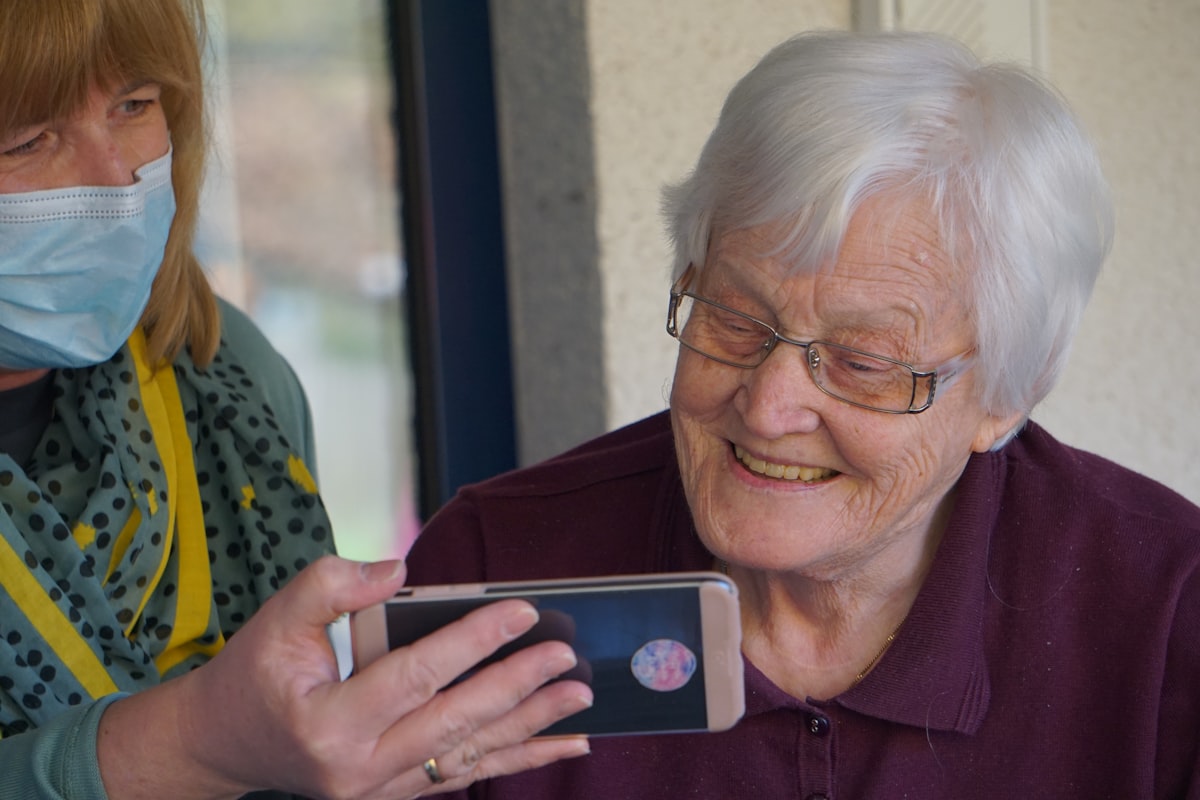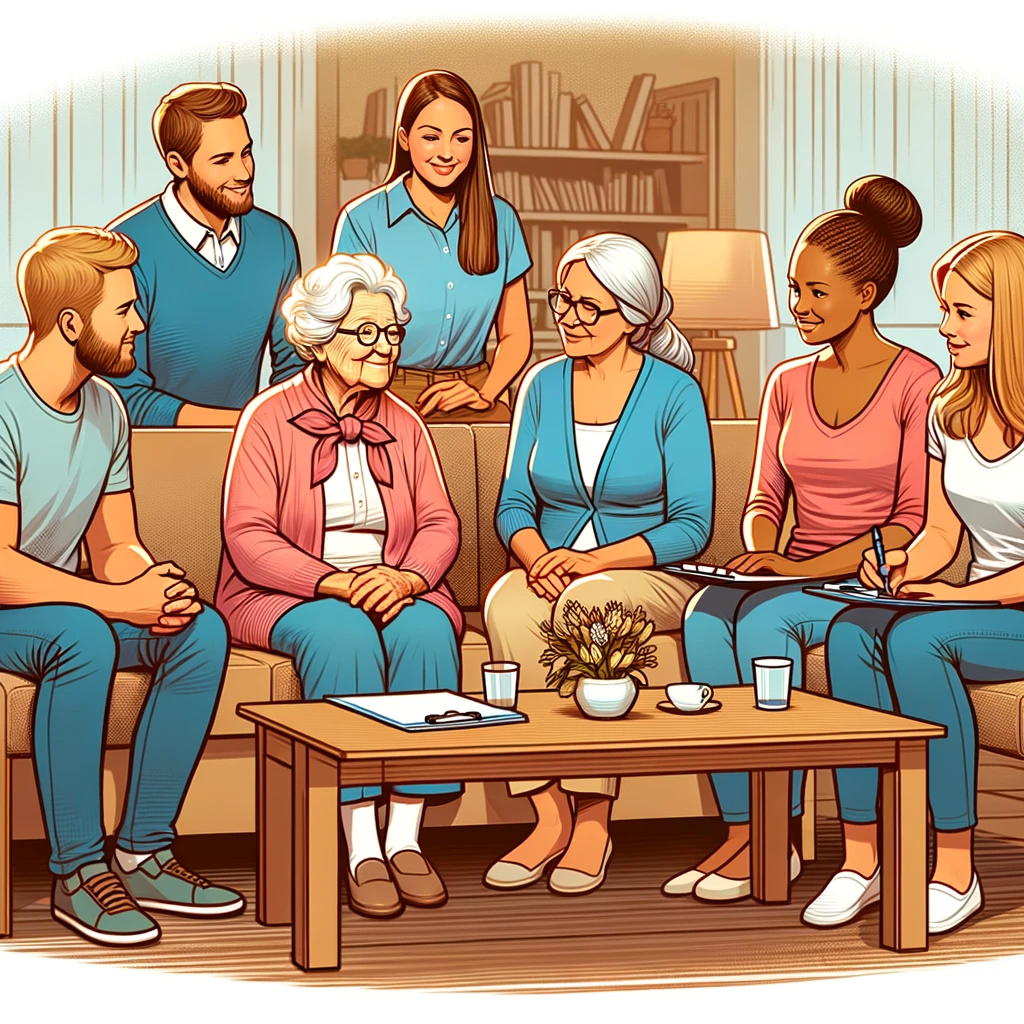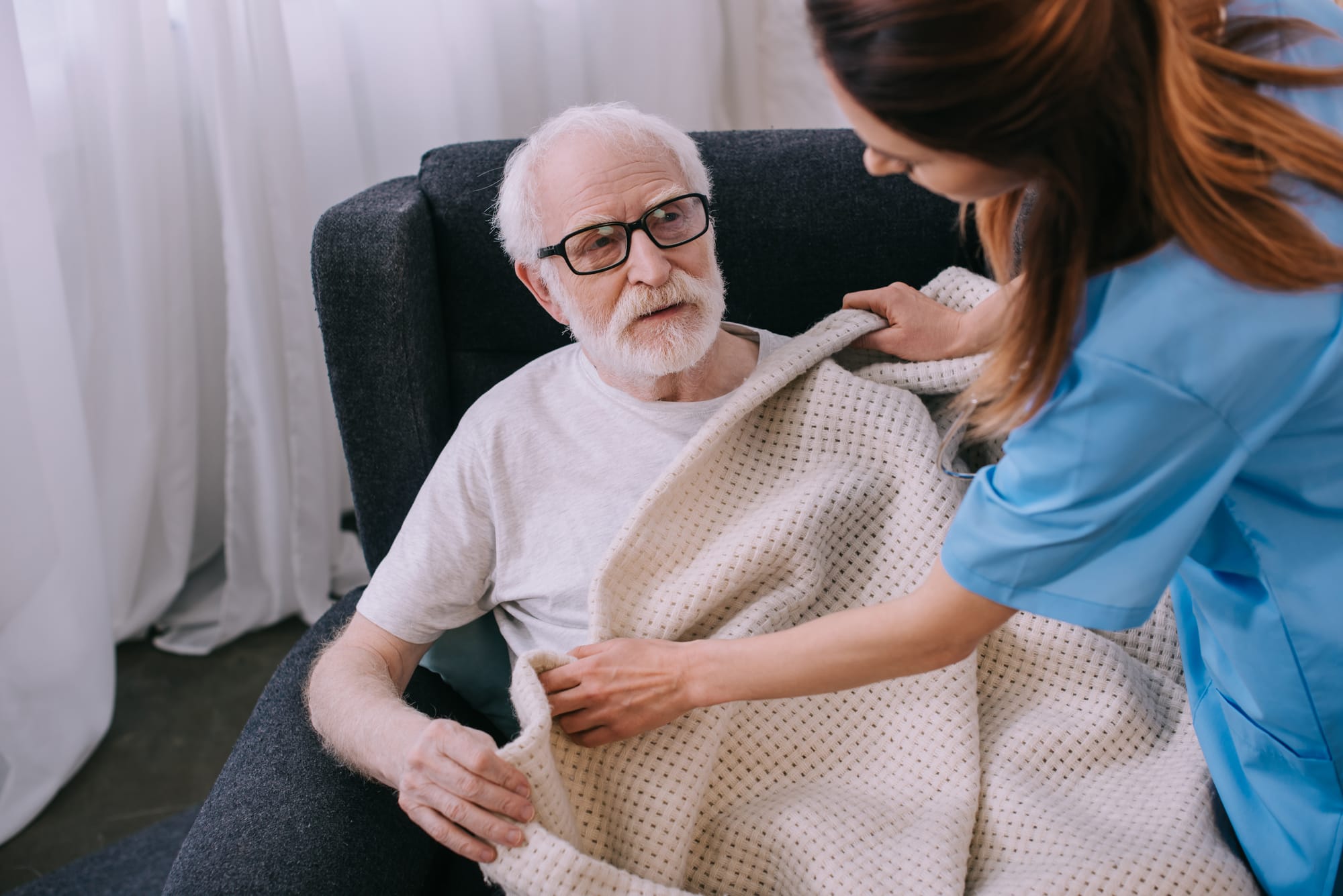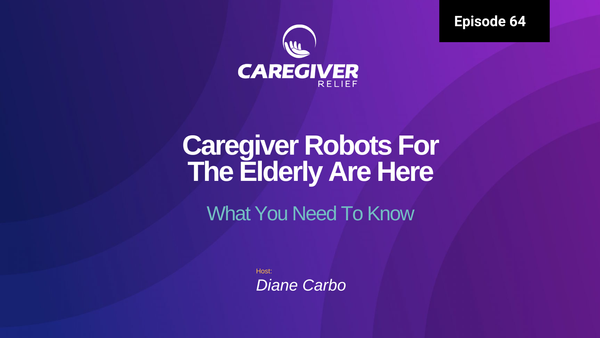Navigating In-Home Care for Seniors: A Comprehensive Guide to Safety and Trust
This article provides a comprehensive guide on managing in-home care for seniors. It covers selecting caregivers, ensuring safety, and building positive relationships, emphasizing the importance of communication, trust, and balancing care with independence.

Introduction to In-Home Care Services
In recent years, the demand for in-home care services for seniors has surged significantly. This growing need stems from a desire among the elderly population to age comfortably and safely in their own homes, as opposed to moving into assisted living facilities. In-home care provides a range of services, from medical assistance to daily living support, catering specifically to the unique needs of each senior.
This article aims to explore the increasing trend of elder care in-home, understanding why more families are choosing this option for their elderly loved ones. We'll delve into the types of services offered, the benefits and challenges of in-home care, and provide insights into effectively managing these services. By examining real-world examples and expert opinions, we'll provide a comprehensive overview of in-home care, aiming to inform and guide those considering this vital service for their family members. The overarching goal is to present a thorough understanding of in-home care services, highlighting their growing importance in today's aging society.
Guide to home health care services
The Vital Role of Caregivers for Elderly at Home
In-home caregivers play an essential role in maintaining the independence and dignity of seniors. By offering personalized care within the familiar surroundings of home, caregivers enable elderly individuals to continue living in their own environment, a factor crucial for emotional and mental well-being. This support ranges from basic assistance with daily activities to more specialized medical care.
The services provided by in-home caregivers include:
Personal Care: Assistance with personal hygiene, bathing, dressing, and grooming.
Companionship: Offering social interaction and emotional support.
Healthcare Services: Administering medications, providing wound care, and monitoring health conditions.
Mobility Assistance: Helping with moving around the house and preventing falls.
Meal Preparation: Cooking nutritious meals catering to dietary needs and preferences.
Housekeeping: Managing household tasks like cleaning, laundry, and grocery shopping.
Transportation: Driving seniors to appointments, social events, or errands.
By providing these comprehensive services, in-home caregivers not only enhance the quality of life for seniors but also offer peace of mind to families, knowing their loved ones are in capable and caring hands.
The Trust Factor: Welcoming Strangers into the Home
Welcoming an in-home caregiver into one's home requires a significant level of trust. This is especially true for seniors who may feel vulnerable about the idea of having a stranger in their private space. To address these concerns, it's crucial to undertake a thorough vetting process, including background checks and interviews, before hiring a caregiver.
Building trust with in-home caregivers involves open communication, setting clear expectations, and establishing boundaries. Regular check-ins and a trial period can also be helpful. It's important for seniors and their families to feel comfortable and secure with the caregiver, as this relationship is integral to the success of the in-home care arrangement. Gradually, as the caregiver demonstrates reliability, competence, and compassion, trust can develop, leading to a more harmonious and effective care environment.

Managing Home Health Care Workers: Ensuring Effective Care and Communication
Managing in-home caregivers is a critical aspect of ensuring high-quality care for seniors at home. It involves not only overseeing the care provided but also building a positive working relationship based on trust, respect, and clear communication.
Best Practices for Managing In-Home Caregivers
Clear Communication: Establish open lines of communication with the caregiver. Regular meetings or check-ins can help address any concerns and provide updates on the senior's health and well-being. I recommend you create a Home Health Care Notebook and complete a Person Centered Care Profile. If you have opted for the Online care management system on our site, this is a great way to communicate with your team and other family members.
Set Clear Expectations: From the onset, clearly outline the responsibilities and expectations for the caregiver. This includes specific tasks, hours of work, and any particular needs of the senior. Having a written agreement or contract can be beneficial.
Training and Orientation: Ensure the caregiver is properly oriented and trained, especially if the senior has specific medical needs or preferences. This might include training in handling medical equipment, understanding medication regimes, or following dietary restrictions.
Respect and Professionalism: Treat caregivers with respect and professionalism. Acknowledging their hard work and offering a supportive environment can enhance their job satisfaction and, in turn, the quality of care provided.
Feedback Mechanism: Implement a system for regular feedback from both the caregiver and the senior receiving care. This can help in making necessary adjustments to care plans and resolving any issues promptly.
Safety Protocols: Establish safety protocols for both the caregiver and the senior. This includes emergency procedures, understanding any potential hazards in the home, and ensuring a safe working environment. Here is a fall prevention checklist
Regular Assessments: Conduct regular assessments of the senior's health and the quality of care being provided. Adjust care plans as needed based on these assessments.
Cultural Sensitivity: Be mindful of cultural differences and ensure that caregivers are aware of and respectful towards the senior’s cultural background and personal preferences.

Importance of Setting Expectations and Communication
Setting clear expectations and maintaining effective communication are foundational to successfully managing in-home caregivers. This ensures that both the caregiver and the family are on the same page regarding the senior’s needs and care requirements. Clear communication prevents misunderstandings, builds trust, and facilitates a more personalized and effective care plan. It also allows for timely interventions if the senior's needs change or if any issues arise.
In summary, managing in-home caregivers effectively is a dynamic process that requires ongoing attention and adjustment. It involves clear communication, setting and managing expectations, providing proper training, and maintaining a respectful and supportive working relationship. By adhering to these best practices, families can ensure their loved ones receive the best possible care in the comfort of their homes.
Protecting Seniors from Theft and Harm: A Guide to Safety in Home Care
Ensuring the safety and security of seniors receiving in-home care is paramount. With the introduction of caregivers into their private space, it becomes essential to implement measures to protect against theft, harm, and the misuse of personal information. Here's a guide on prevention strategies and practical tips.
Thorough Background Checks: Before hiring, conduct comprehensive background checks on potential caregivers. This includes criminal record checks, reference checks, and verifying certifications if they are providing medical care.
Use of Security Systems: Consider installing security cameras in common areas of the home. Inform the caregiver about these cameras to maintain transparency. This not only acts as a deterrent but also provides a way to monitor activities in the home.
Limit Access to Sensitive Information: Keep personal documents like bank statements, credit cards, and social security information in a secure, locked location. Only trusted family members should have access to these critical documents.
Secure Online Accounts: Ensure all digital devices and accounts are password protected. Use strong, unique passwords and change them regularly. Consider setting up alerts for unusual activities on bank and credit card accounts.
Regular Audits: Periodically review bank statements and credit reports for any suspicious activity. If the senior is not able to do this themselves, a trusted family member should take on this responsibility.
Establish Clear Boundaries: Make it clear to the caregiver what is off-limits in the house. This includes personal items, certain rooms, or valuables. Setting these boundaries early on can prevent misunderstandings.
Educate about Scams and Frauds: Seniors should be educated about common scams, especially those targeting the elderly, such as phone or online scams. Caregivers should also be aware and vigilant about these risks.
Medication Management: Keep prescription drugs, especially narcotics, in a secure location. Only the caregiver or a family member should have access to administer these medications.
Transportation Safety: If the caregiver is responsible for driving the senior, ensure they have a valid license and a good driving record. Set clear rules about the use of the vehicle.
Establish a Check-in System: Have a family member or a close friend regularly check in with the senior to ensure their well-being and to provide an opportunity for them to voice any concerns.
Legal Measures: Consider legal measures such as power of attorney or guardianship to protect the senior’s financial interests, especially if they are not fully able to manage their own finances.
Encourage Open Communication: The senior should feel comfortable talking about any concerns or issues they face with their caregiver. A supportive environment where they can voice their concerns is crucial.
Caregiver Training: Ensure that caregivers are trained not just in care provision but also in recognizing and reporting abuse or neglect.
Know the Warning Signs: Educate yourself and the senior about the signs of abuse or neglect, which can include unexplained injuries, sudden changes in financial situations, or changes in the senior’s behavior.
Have an Emergency Plan: Establish an emergency plan and ensure the caregiver is aware of it. This should include contact information for family members, doctors, and local emergency services.
Protecting seniors from theft and harm in a home care setting involves a combination of vigilance, education, and the implementation of practical safety measures. By taking these steps, families can create a safer environment for their elderly loved ones, ensuring they receive the care and respect they deserve.

Essential Preparations Before In-Home Care Begins
Before introducing in-home care into the life of a senior, certain essential steps must be taken to ensure a safe, secure, and beneficial environment for both the senior and the caregiver. This preparation involves careful planning, thorough vetting of potential caregivers, and implementing safety measures.
Identifying Care Needs: Start by assessing the specific needs of the senior. This could range from basic assistance with daily tasks to specialized medical care. Understanding these needs helps in finding the right caregiver with the appropriate skills. Make the person centered profile for those providing care available and encourage the in home health care worker to add things they learn to this profile.
Conducting Background Checks: Once potential caregivers are identified, conduct thorough background checks. This includes verifying their employment history, credentials, and any criminal records. It’s vital to ensure the person you're bringing into a senior's home is trustworthy and has a clean background.
Securing Personal Information: Before the caregiver begins, secure all sensitive personal information. This includes financial documents, legal papers, and personal identification documents. These should be stored in a locked cabinet or safe.
Setting Clear Expectations: Have a detailed discussion with the caregiver about the responsibilities and expectations. This should cover the scope of work, hours, emergency procedures, and any specific care requirements. A written agreement or contract can formalize this understanding.
Home Safety Assessment: Conduct a home safety assessment to identify and mitigate any potential hazards. This includes ensuring the home is easily navigable for both the senior and the caregiver, checking smoke detectors, and securing any area that could pose a risk.
Managing Medications: If the caregiver will be responsible for managing medications, organize the medications clearly and provide detailed instructions on dosage and schedules.
Training on Equipment and Special Needs: If there is special medical equipment or specific care routines, provide the caregiver with the necessary training or instructions.
Establishing Communication Channels: Set up a system for regular communication. This could be a daily log, weekly meetings, or regular check-ins to discuss the senior’s care and any concerns.
Safeguarding Valuables: Secure valuable items and keepsakes. While it’s important to trust the caregiver, it’s equally prudent to remove temptation and protect precious items.
Privacy Measures: Ensure digital privacy by securing computers and online accounts. Use strong passwords and consider setting up monitoring for unusual activities.
Preparing the Space: Create a comfortable and functional workspace for the caregiver. This includes providing them with necessary supplies and a designated area to take breaks.
Emergency Preparedness: Make sure the caregiver is aware of what to do in case of an emergency. Provide them with emergency contact numbers, medical information of the senior, and instructions for emergency situations.
Orientation and Trial Period: Initially, spend time orienting the caregiver with the senior’s routines and preferences. Consider a trial period to ensure that the caregiver is a good fit for the senior’s needs.
Legal Considerations: If applicable, ensure that legal considerations such as power of attorney, healthcare directives, and caregiver contracts are in place.
Taking these steps before beginning in-home care can create a safe, secure, and comfortable environment for seniors. It ensures that the caregiver is well-equipped to provide the best possible care, and gives peace of mind to families that their loved ones are in good hands. Proper preparation is key to a successful in-home care experience.

The Human Aspect: Building a Positive Relationship with Caregivers
The journey of in-home care is not just about ensuring physical well-being; it’s also about nurturing positive relationships. The bond between seniors and their caregivers is pivotal to the success of in-home care, requiring a delicate balance between professional boundaries and compassionate care.
Importance of a Positive Relationship
A positive relationship fosters trust, respect, and open communication, making it easier for caregivers to understand and meet the senior's needs. This connection can significantly impact the senior's mental and emotional health, enhancing their overall quality of life. Caregivers who feel valued and understood are also more likely to deliver high-quality care.
Balancing Professionalism and Compassion
Professional boundaries are essential to maintain respect and appropriate behavior. Caregivers should be trained to be empathetic and compassionate while keeping a professional distance. This balance prevents over-attachment, which can cloud judgment or lead to boundary crossing.
Addressing and Resolving Issues
- Open Dialogue: Encourage regular and open dialogue between the senior, caregiver, and family members. Addressing concerns early can prevent them from escalating.
- Feedback Mechanism: Implement a system for feedback and regular check-ins to discuss any issues or concerns.
- Mediation: In case of disagreements, consider mediation with a third party, like a care manager or agency representative.
- Training and Support: Offer ongoing training and support to caregivers to help them handle challenging situations effectively.
Contacting Authorities
In cases of serious issues like abuse, neglect, or fraud, it's crucial to take immediate action:
- Documentation: Keep a record of any incidents or concerning behavior.
- Report to Agency: If the caregiver is employed through an agency, report the issue to them first.
- Legal Action: In cases of criminal activity, contact law enforcement.
- Adult Protective Services: For concerns about abuse or neglect, contact local adult protective services.
Conclusion: Ensuring a Safe and Positive In-Home Care Experience
In-home care is a collaborative effort. Success lies in the careful selection of caregivers, establishing clear communication channels, and maintaining the right balance between professional care and personal connection. Regular monitoring and being vigilant about any changes in the senior’s behavior or condition are crucial. By fostering a positive, respectful, and safe environment, in-home care can significantly improve the quality of life for seniors, providing them with the dignity, care, and comfort they deserve in their later years.
Be Aware There is a Shortage of Home Health Care Workers
You might also like this article:










